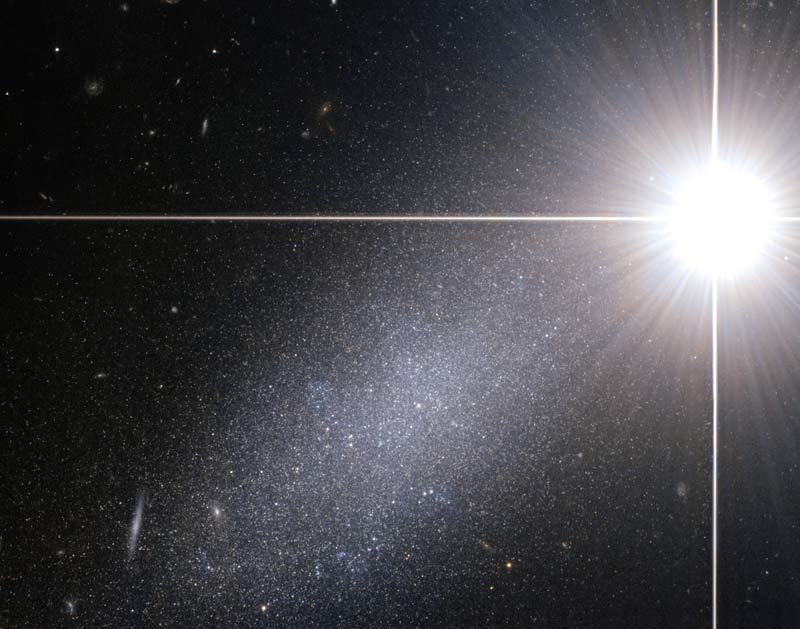
Oftentimes in skywatching stories, astronomers refer to the magnitude of a star or planet. It's how stargazers determine how bright an object appears in the night sky.
The concept of magnitude is relatively easy to grasp. Put simply, the lower the magnitude of a star or object, the brighter it appears in the sky.
This system had its origins in the classification by brightness of about a thousand stars carried out by Hipparchus in the second century B.C. The average shine of the 21 brightest stars in the sky is defined as first magnitude, while the faintest stars normally visible to the unaided eye on a clear, dark night are said to be of sixth magnitude.
Unfair star rankings?
Sixth-magnitude stars shine about one-hundredth times as bright as first-magnitude stars, so a separation of five magnitudes corresponds to a difference in brightness of a factor of 100.
The scale is logarithmic. A difference of one magnitude corresponds to a difference in brightness of 2.512. For example, second-magnitude stars are said to be 2.512 times brighter than third-magnitude stars and 6.31 times brighter than fourth-magnitude stars, and so on. Remember, it's the lower-magnitude stars that are the brighter objects.
In many astronomy textbooks star brightness is typically categorized in magnitude "bins." Any star that, for example, falls between magnitude 1.50 and 2.49 would be designated as "second magnitude."
Breaking space news, the latest updates on rocket launches, skywatching events and more!
So if we looked at two stars in the sky, one of magnitude 1.50 and another of magnitude 2.49, they would appear to our eyes to differ noticeably in apparent brightness by a factor of 2.5.
And yet, both stars still would be categorized as second-magnitude stars.
Conversely, if we have two stars in the sky, one of magnitude 2.49 and the other of magnitude 2.50, both would appear equally bright to us. Yet, thanks to magnitude binning, the star of magnitude 2.49 would be classified as a second-magnitude star while the star of magnitude 2.50 would be recognized as a third-magnitude star!
The almost-bright star
If you think that's a bit unfair, recall that I noted earlier there are 21 stars in the sky that are categorized as first magnitude. Were it not for the miniscule difference of just one-hundredth of a magnitude, that listing of first-magnitude objects could be increased by one more star.
If that were so, then one constellation could then have the unusual distinction of having within its boundaries the two first-magnitude stars that were placed at the very top and bottom of that list.
That constellation is reaching its highest point in the southern part of the sky at around 8 p.m. EST (0300 GMT: Canis Major, the Big Dog.
Within this constellation we find the brightest star in the sky: Sirius, the Dog Star, which shines at a dazzling magnitude of –1.44. Its blinding presence overwhelms a neighboring star, Adhara, which shines at magnitude +1.50 and ranks as the 22nd brightest overall in the sky.
Yet by virtue of binning, poor Adhara misses by just 0.01 of a magnitude, the cutoff for official first-magnitude classification. As a result it is recognized as just another second-magnitude star.
A celestial deception?
And here is yet another dramatic example of how appearances can be deceiving: Adhara is actually 175 times brighter than Sirius.
But because it's 431 light-years away as compared with just 9 light-years for Sirius, Adhara appears only one-15th as bright. So while all the stargazing accolades go to Sirius, it is really the star Adhara that should be recognized as the true dazzler.
Like the famous late comedian Rodney Dangerfield, it seems poor Adhara gets no respect. But that's the way things go sometimes in astronomy!
Joe Rao serves as an instructor and guest lecturer at New York's Hayden Planetarium. He writes about astronomy for The New York Times and other publications, and he is also an on-camera meteorologist for News 12 Westchester, New York.

Joe Rao is Space.com's skywatching columnist, as well as a veteran meteorologist and eclipse chaser who also serves as an instructor and guest lecturer at New York's Hayden Planetarium. He writes about astronomy for Natural History magazine, Sky & Telescope and other publications. Joe is an 8-time Emmy-nominated meteorologist who served the Putnam Valley region of New York for over 21 years. You can find him on Twitter and YouTube tracking lunar and solar eclipses, meteor showers and more. To find out Joe's latest project, visit him on Twitter.
